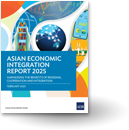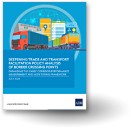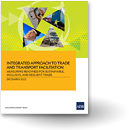Despite the pandemic, remittances have kept flowing home to Asia’s families
Strong remittance inflows should be used as an opportunity to strengthen the systems that help overseas workers and their families back at home.
Toward the latter half of 2020, remittance inflows remained strong for some of the countries in Asia and the Pacific with the largest number of outbound migrants. This was encouraging in light of the massive decline recorded in the second quarter of that year, when the economies of the countries that host migrants sharply contracted due to the pandemic.
Many Asian migrant workers seem to have withstood the waves of economic hardships, sending home record amounts of money in months following a large slump between April and May 2020. All countries with available data, except Fiji and Kazakhstan, witnessed recoveries in remittance inflows by June that were sustained until July.
Remittances to Fiji almost reached pre-COVID-19 growth recorded in January but fell again in August and then bounced back to a record high in October. Among those with available data for all months of 2020, Bangladesh (18.6%), Fiji (8.7%), Georgia (8.8%), and Pakistan (17.4%) have all received higher remittance money relative to 2019.
We identified six factors that may explain how remittances remain afloat. The first involves the gradual reopening of economies hosting many Asian migrants while following strict public health protocols. More workers, including migrants, have been allowed to return to their workplaces.
Deployment of new workers has also resumed. In July 2020, the Thai government allowed migrant workers with proper paperwork from Cambodia, the Lao People’s Democratic Republic, Myanmar and Viet Nam to return for work. Nepal began deployment of migrant workers in September 2020. Filipino nurses and medical workers with employment contracts were allowed to depart in 2020.
The second factor speaks to the countercyclical nature of remittances. With their families back in developing countries struggling with economic complications exacerbated by strict community quarantine, migrants have more reasons to send money home.
A survey by WorldRemit found that 84% of over 3,000 overseas Filipinos from the United Kingdom, the United States, Canada, and Australia planned to remit the same amount or more money during the holidays. In Bangladesh, natural disaster struck in July 2020 while fighting the pandemic, prompting affected families to seek additional help from their relatives abroad.
Third, the availability of social assistance to migrant workers allowed them to continue sending money home. This was especially true among migrants from many developed countries, which have supplemented existing unemployment insurance and expanded access social assistance programs.
Fourth, the greater use of digital channels for money transfer has allowed migrants to remit even during lockdowns. The informal option of carrying money home is almost impossible with many borders closed and migrants unable to visit or return. Leading money transfer and fintech companies have reported tremendous growth in their digital businesses, squeezing four years of growth in only two months during the peak of the pandemic. The diversion of remittance money from informal channels may have led to the surge in recorded remittances, and could possibly be covering a fall in total remittances.
Fifth, remittances were bolstered when some migrant origin countries, such as Pakistan and Sri Lanka, introduced measures to encourage migrants to send money home. Under the Pakistan Remittances Initiative, the government lowered the threshold for eligible transactions for cash rebates from $200 to $100 under the Reimbursement of Telegraphic Transfer Charges Scheme. In Sri Lanka, exchange control regulations and taxes were eased for inward remittances.
Lastly, the erratic behavior in monthly remittance flows may indicate sudden asset transfers involving returning migrants. Non-resident migrants who are opting to fly home due to unemployment or other reasons may be sending all their savings. However, there is no sufficient information to measure the magnitude of this activity.
There are reasons to remain cautious despite the seeming recovery of remittance inflows, and governments need to work together to help migrants get back to work.
While the deployment ban on healthcare workers from the Philippines has been lifted, the government placed a deployment cap to ensure enough medical professionals as the country grapples with the pandemic. There is no new deployment of Indonesian domestic workers and caregivers to Malaysia, Singapore, and Saudi Arabia. Since much of the migration from Asia is contractual, the slow pace of deployment will reduce the number of migrant workers at the destination who remit.
In case of prolonged disruptions in remittance flows, governments should be prepared to further help returned migrants and households receiving remittances. Some recipient households remain at risk of falling into poverty, highlighting the need for sustaining support especially for those with little access to employment including older persons, single parents and persons with disabilities.
Migrants who returned due to pre-termination or end of contract and face difficulty securing new overseas contracts may be assisted through job referrals, skills training/certification, and entrepreneurship training.
The pandemic has underscored the key role of policy and regulatory frameworks in the functioning of remittance markets in times of crisis. Rules and procedures for remittance transfer could be simplified and made less costly for low-risk accounts. New business models and partnerships could foster mobile money and other branchless banking, lowering capital and bond requirements as well as full banking licenses for money transfer operators.
In the long run, financial literacy education and skills training for migrants can improve their capabilities as well as their resilience to shocks. Many low-skilled Asian migrant workers are concentrated in a few destination countries, making them more vulnerable to shocks in those countries. Migrants with higher skill sets tend to be less vulnerable because they explore more diversified destination countries.
Finally, the exchange of timely, accurate, and reliable information is essential to identify effective responses. Establishing migrant information infrastructure can address data gaps on migration and remittances and enable monitoring of abrupt changes requiring policy interventions. This could also facilitate coordination and cooperation during emergencies and, in the long run, help policymakers better assess migration issues.
The recent strong remittance figures should not be seen as a reason to return to business as usual. Rather, they are an opportunity to strengthen the systems that help overseas workers and their families back home.
Original article was published at the ADB Blog and duplicated here with permission from the authors. *




